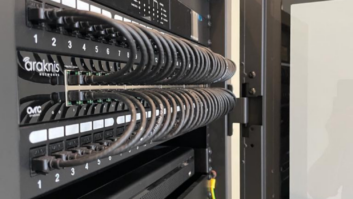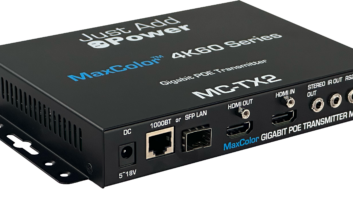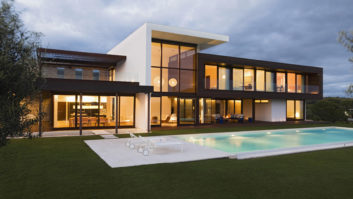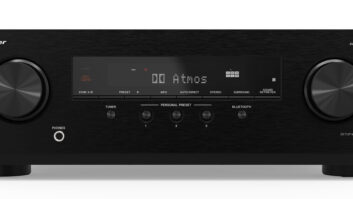The global smart homes market is expected to grow from $77 billion in 2021 to $205 billion in 2026, so it’s no secret that technological advancements are playing an ever-increasing role in the design of the house of tomorrow. Many devices in the home soon will be — or are already — a smart device in some capacity. And the one element these devices all have in common is how they communicate: the network. Granted, many of these devices use wireless connections, and while mesh Wi-Fi works for the smart home of today, it’s difficult to imagine the types of devices and services homes may use in the future.
That’s where Ethernet comes in. Ethernet is the global standard for wired computer networks, and wired networks are now the de facto standard for audio and video transmission in commercial applications. Those looking to future-proof their homes should strongly consider running structured Cat5E or Cat6 cabling throughout the rooms.
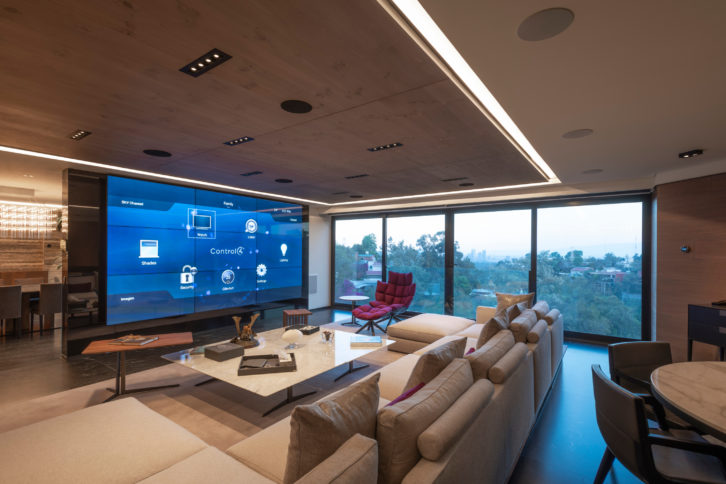
AV continues to evolve “last mile” connectors for many devices — a trend with no signs of ever stopping. Think HDMI vs. Thunderbolt vs. USB-C for video. It’s the Betamax vs. VHS throwdown for today’s audience. Even if one of those standards “wins,” there’s no telling what’s just around the bend (USB-X, anyone?). All those aforementioned cable types come with cable length restrictions, so wiring a house with any of those cables is both cost-prohibitive and at heightened risk for obsolescence.
Related: Why Audio Over IP?
The house of tomorrow requires flexibility in its underlying systems, and one of Ethernet’s greatest strengths is its incredible versatility. A wired Ethernet network can easily accommodate hundreds of audio channels alongside internet and control traffic, all while sending these signals simultaneously to different devices as needed. A signal entering an RJ45 port in one room can be transported to any other port (unicast) or multiple ports (multicast). If rooms get re-configured for different uses (a home office becomes a nursery becomes a craft room), Ethernet networking can support the data and AV needs for each use-case with ease. The Ethernet standard supports runs up to 100m (333 feet) before requiring a signal repeater or network switch, which will satisfy all but the largest homes for direct cable runs.
An additional benefit of standardizing on a cable type is lower costs in both installation time and material. Having to pull multiple cable types throughout the home and terminate them with different connectors takes considerable time, and in certain cases requires a higher skill level to make acceptable terminations (fiber, for example). Ethernet, by comparison, is a very straightforward and fast crimp termination.
Dante and AVoIP
Internet Protocol (IP) is a set of rules governing the format of data sent over a network, and AVoIP, or AV-over-IP, is simply the transport of audio or video data over that same network so that the AV data (also referred to as streams) conforms to those rules. Data transmitted over IP is subdivided into packets. Each packet contains part of the original file as well as additional control information, such as source, destination, and sequence. The only difference between a traditional AV setup and AVoIP is that the audio and video moving through the series of boxes and cables changes from circuit-based to packet-based.
Ethernet is the physical basis for AVoIP, but you also need to consider how data is transported from Point A to B (and C and D). There are a number of transport protocols out there for audio and/or video signals (in most cases it’s one or the other, not both), but the one we favor here at Audinate is our own Dante. Dante is capable of transporting both audio and video signals, has a huge adoption rate in commercial applications with over 3000 devices supporting it, and an ever-increasing adoption in residential installations.
Because Dante is an IP-based protocol, any devices on the network that have an IP address assigned can have Dante traffic routed to them, assuming they’re Dante-enabled or Dante Ready. Dante Ready is a recent licensing program that gives customers the ability to purchase and add channels of Dante audio to supported products in the field, which is another great way to future-proof the home.
Best of all, Dante is very easy to use, so installers/integrators don’t have to spend countless hours training on the technology and can spend more time in the field. Dante AV automatically synchronizes the delivery of the audio and video streams, so there’s never an issue with the audio being out-of-sync with the video like a poorly dubbed foreign film.
As AV trends and developments in commercial applications continue to spill over to the residential market, you should expect to see more residential products jumping on the AVoIP bandwagon. This will be a great benefit to homeowners looking to future-proof their homes, and with Dante leading the way in AVoIP, the future looks bright indeed.
